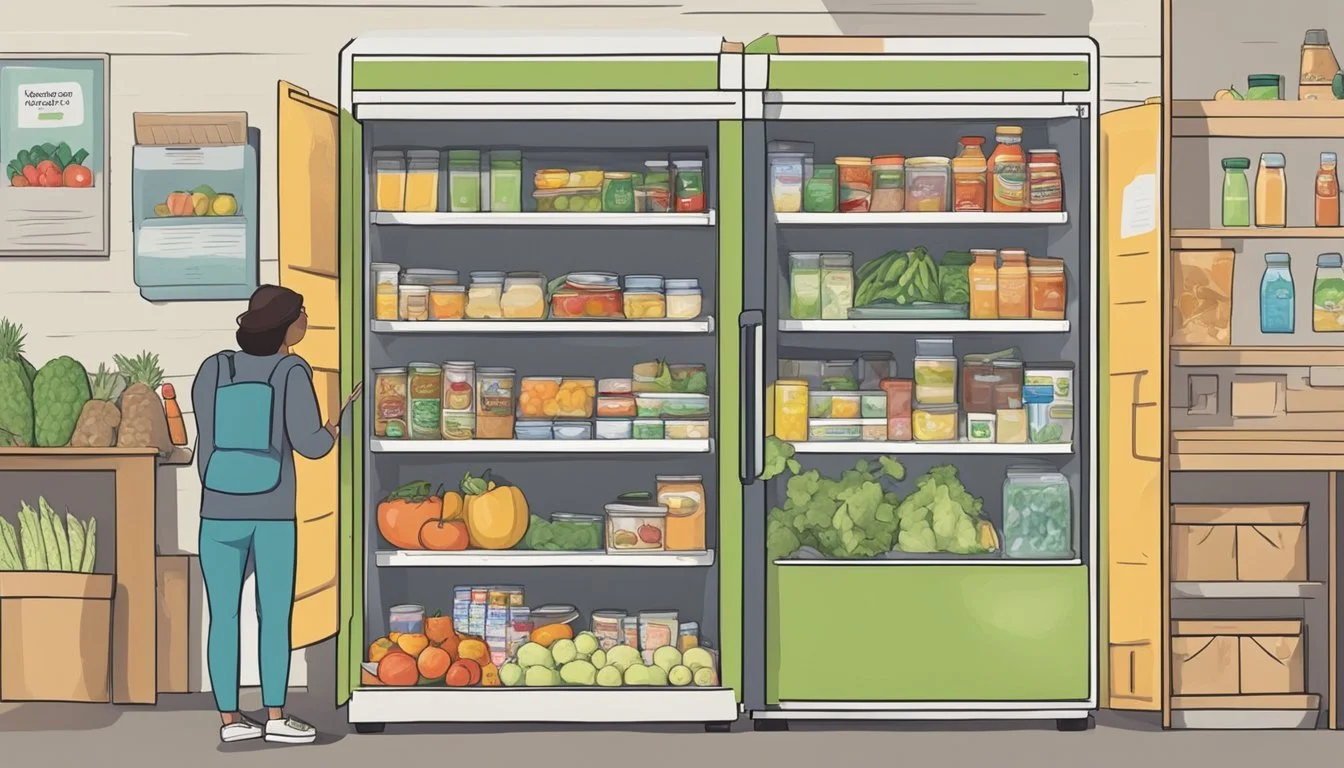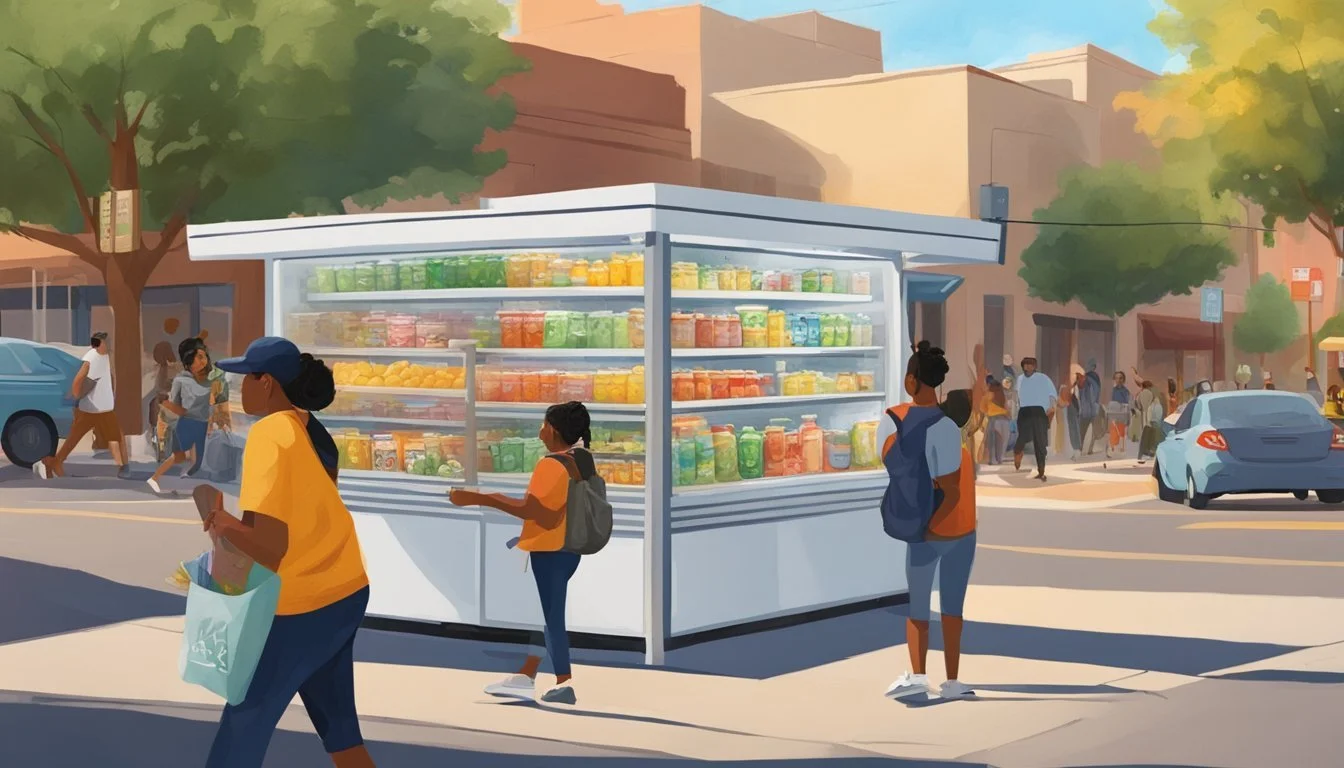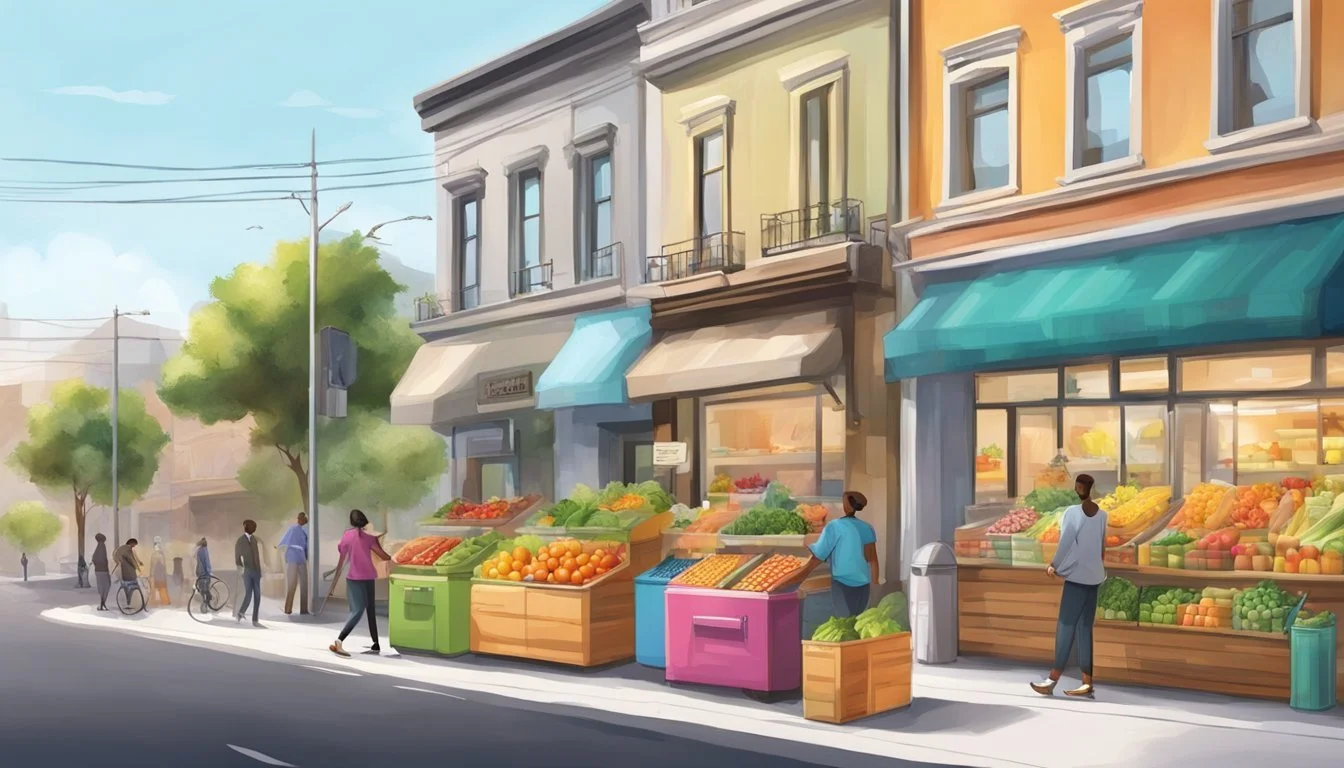Buckeye, AZ Community Fridge
Tackling Food Insecurity with Local Action
In Buckeye, Arizona, the Community Fridge initiative is a compassionate response to food insecurity and waste. Known commonly as a 'freedge', this public refrigerator is strategically placed to provide free, accessible food to those in need. It operates under a simple principle: take what you need, leave what you can. This system not only addresses hunger at a local level but also contributes to reducing food waste by allowing the community to share surplus groceries in a central location.
Community fridges like the one in Buckeye have been gaining traction as a grassroots solution to support individuals facing food scarcity. These fridges are often stocked with unexpired and unopened food items. Voluntarily managed by local organizations and citizens, they embody the spirit of community and mutual aid. In an era of heightened environmental awareness, such community-led efforts also echo the growing concern for sustainable practices by repurposing perfectly good food that would otherwise end up in landfills.
Buckeye's freedge emerges within a larger movement that reflects a shift towards community-driven support systems. While it serves its immediate purpose of feeding those who may be struggling to make ends meet, it also stands as a testament to the power of collective community action. With consistent contributions from local residents and businesses, the freedge fosters not only food security but also a connected and caring community network.
Background on Food Insecurity
Food insecurity remains a challenge in Buckeye, Arizona, where limited access to nutritious food affects the well-being of the community. Community fridges emerge as a practical solution, reducing food waste and aiding those impacted by the economic consequences of the coronavirus pandemic.
The Role of Community Fridges
Community fridges in Buckeye operate as local hubs where residents can access free food, typically donated by businesses, farms, and individuals. They serve as a direct response to the food insecurity experienced by some residents, offering a variety of perishable and non-perishable items without the need for eligibility criteria, thus ensuring immediate relief for those in need.
Addressing Food Waste
The community fridge initiative in Buckeye addresses food waste by repurposing excess food that would otherwise be discarded. Local businesses and individuals are encouraged to donate surplus items, creating an efficient cycle where food is consumed rather than wasted, benefiting both the environment and the community.
Impacts of the Coronavirus Pandemic
The onset of the coronavirus pandemic exacerbated food insecurity in Buckeye, as job losses and economic uncertainty increased the demand for food assistance. Community fridges have become vital in these times, as they provide an accessible way for impacted families to receive assistance. Furthermore, the increase in donations during the pandemic has demonstrated a strong community spirit, highlighting the significant role of solidarity in times of crisis.
Setting Up a Community Fridge
When establishing a community fridge in Buckeye, AZ, organizers must consider the type of fridge suitable for communal needs, secure an accessible location, and coordinate with local programs for consistent food donations.
Choosing the Right Fridge
Selecting a durable and energy-efficient fridge is crucial for the sustainability of the community fridge initiative. A sturdy commercial-grade fridge that can withstand frequent use and Arizona's temperature fluctuations is recommended. Brands like True and Samsung are often chosen for their reliability and cost-effectiveness.
Finding a Location
The fridge should be situated in a spot that is visible and easily reachable by the community members it aims to serve. Ideal locations include public spaces with high foot traffic such as community centers, places of worship, or near local businesses willing to partner with the initiative. The location must have a power source and should comply with local zoning and health regulations.
Establishing Food Donation Programs
Creating partnerships with local grocers, restaurants, and food banks can ensure a steady supply of donations to the community fridge. Setting up food collection programs involves:
Coordination: Schedule regular pick-ups or drop-offs with partners.
Documentation: Keep records of food sources, types of food donated, and expiration dates.
Volunteer Involvement: Recruit and train volunteers for managing the logistics and maintaining the cleanliness and safety of the fridge.
Regulatory Compliance and Safety
In Buckeye, Arizona, a community fridge initiative adheres strictly to health and food safety regulations while ensuring consistent maintenance and upkeep. These fridges offer a charitable food service by bridging gaps in food insecurity and are a display of community solidarity.
Health and Safety Regulations
Community fridges in Buckeye must comply with Arizona Department of Health Services food codes which outline the safety practices for public food service. These regulations include:
Food Handling: Ensuring that individuals restocking the fridge are versed in safe food handling procedures to prevent contamination.
Temperature Controls: Monitoring appliances to maintain proper temperatures that inhibit bacterial growth in perishable foods.
Additionally, services involved in food distribution are subject to regular inspection, aligning with the state's risk-based inspection protocol.
Maintenance and Upkeep
Regular maintenance is crucial for the community fridge's operation to provide safe and reliable services. This entails:
Daily Checks: Conducting daily assessments of the fridge's condition, confirming that both the internal and external environments are sanitary and well-functioning.
Professional Servicing: Implementing a schedule for professional servicing of the appliance to mitigate potential safety hazards and extend lifespan.
Through these measures, the community fridge upholds its commitment to providing a secure and efficient service that meets the needs and safety of the Buckeye residents.
Community Engagement and Support
Community fridges in Buckeye, AZ are driven by collaborative efforts involving local residents, volunteers, and a network of supporters. These initiatives strengthen neighborhood ties and increase awareness about food resources for those in need.
Volunteer and Community Involvement
In Buckeye, Arizona, the success of community fridges hinges on the commitment of volunteers. They manage fridge maintenance, ensure a steady supply of food, and engage in ongoing community outreach efforts. Volunteer roles vary from stocking the fridges with donations to organizing food drives. The participation of neighborhood residents is crucial, as they are the eyes and ears on the ground, alerting volunteers to restock or clean the fridges as necessary.
Promotion and Awareness
Effective promotion and awareness are key to maximizing the impact of community fridges. Buckeye leverages various strategies to inform residents about the availability and location of these resources. Print ads in local publications, social media campaigns, and word-of-mouth are utilized to spread the message. Clear and visible signage on the fridges themselves often display inviting messages such as “free food” to attract attention. Additionally, the fridges are sometimes adorned with unique artwork, turning them into neighborhood landmarks and talking points to further raise visibility.
Benefits and Success Stories
Community fridges in Buckeye, AZ, have emerged as an effective solution for combating food insecurity, and their implementation has yielded numerous success stories.
Impact on Local Communities
Community fridges directly address food scarcity issues by providing free, accessible meals to residents in need. These refrigerators are a testament to the power of solidarity within neighborhoods, as they are often stocked with fresh produce and essentials by the community itself. They foster a culture of sharing and reduce food waste through efficient distribution.
Benefits:
Increased access to nutritious food
Strengthened community bonds
Reduced food waste
Highlighting Successful Fridges
Successful community fridges in Buckeye have transformed local areas into hubs of mutual aid. One commendable example is the Main Street Fridge, which has consistently been full, offering a variety of foods. Volunteers keep the fridge stocked, and it serves over 50 meals a week to the community. Testimonies from local residents reveal the profound impact of having a reliable food source right in their neighborhood.
Success Stories:
The Main Street Fridge: Overcoming food insecurity with over 250 meals provided monthly.
Unity Park's Fridge: A symbol of neighborhood collaboration with a record of zero food shortages since its inception.
Operational Challenges
The Buckeye, AZ Community Fridge encounters several operational challenges, ranging from consistent inventory management to maintaining the infrastructure against damage. These obstacles require diligent coordination and resources to ensure the community fridge remains a valuable asset to residents in need.
Managing Inventory and Restock
The primary challenge lies in inventory and restock. Volunteers must regularly check the fridge to assess stock levels, ensuring a balance between perishable and non-perishable goods. They employ strategies such as:
Stock Rotation: Prioritizing the distribution of perishable items to minimize waste.
Supplier Coordination: Engaging with local donors and businesses to maintain a steady flow of contributions.
Handling Repairs and Damages
Appliance repair and mitigating damage entail a proactive approach. The fridge is susceptible to wear and vandalism, necessitating:
Regular Inspections: To spot and address early signs of malfunction or damage.
Community Watch: Encouraging locals to report any incidents of vandalism promptly.
Coordinating Trash and Recycling
The management of trash and recycling is also vital to the operation of Buckeye's Community Fridge. They implement systems such as:
Separate Bins: Clearly marked bins for trash and recyclables near the fridge.
Regular Disposal: Scheduled waste and recycling pickup to avoid overflow and littering.
These systematic efforts ensure the fridge operates smoothly, supporting the community effectively.
Conclusion
Community fridges in Buckeye, AZ, serve as a testament to the efficacy of local efforts in addressing food insecurity. As public repositories for excess food, they operate on the goodwill of donations from individuals and businesses alike. Their presence not only provides access to free, nutritious food for those in need but also encourages sustainability by reducing food waste.
These fridges, maintained by volunteers, underscore a collective approach to community care. They are not mere food storage units but symbols of solidarity, epitomizing a shared responsibility towards the less fortunate. Through a cycle of giving and receiving, community fridges nurture a spirit of generosity that is integral to the town's ethos.
In Buckeye, the practical impact of these initiatives is clear. Affordable living requirements make it essential for programs like community fridges to thrive. They are more than a temporary solution; they represent a long-term commitment to community welfare. By fostering a sustainable model of mutual aid, Buckeye sets an example for communities nationwide in the fight against hunger.
Additional Resources
The Buckeye, AZ community provides avenues for people seeking food assistance through community fridges and offers resources for those interested in starting and learning about these initiatives.
Where to Find a Community Fridge
To locate a community fridge in Buckeye, AZ, individuals can search online for "Buckeye, AZ community fridge," which will yield the most current locations and operating hours. The City of Buckeye Social Services lists local resources, including fridges, where residents can seek assistance.
How to Start a Community Fridge Initiative
For residents of Buckeye interested in starting a community fridge, they should consult with the City of Buckeye or local nonprofit organizations which may offer guidance and support. The website Freedge provides a comprehensive guide that includes information on regulations, necessary applications, and how to become part of a network of community support.
Educational Materials and Further Reading
Educational materials covering the best practices for maintaining a community fridge and ensuring safe food handling can be found through local government and nonprofit organizations. The City of Buckeye's Community Resource Guide is a valuable repository of information, including contacts for non-profit and community agencies that can provide expert advice.









